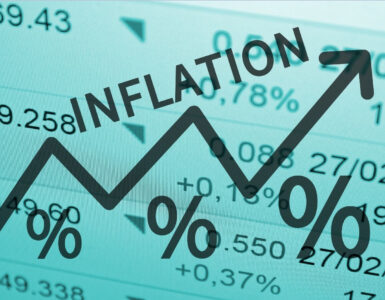Every investor wants alpha — the extra return above what a benchmark index generates. Many stocks don’t deliver alpha at all, but some do.
Ride out the bear market with this big drugmaker
Prosper Junior Bakiny (AbbVie): The year has been good for pharma giant AbbVie, at least so far. The company’s shares are performing much better than the S&P 500. AbbVie benefits from the fact that lifesaving medicines are in high demand even during challenging economic periods. Also, the pharma stock was arguably deeply discounted before its recent run of form.
Even after the strong performance it has shown year to date, AbbVie’s forward price-to-earnings (P/E) ratio is a modest 10.8 — which compares favorably to the pharma industry’s forward P/E of 13.5 and the S&P 500’s 16.95. Meanwhile, AbbVie’s business is solid. It continues to record strong revenue and earnings growth. While it will lose patent exclusivity for its blockbuster rheumatoid arthritis medicine Humira next year, sales for AbbVie’s newer immunology products — Skyrizi and Rinvoq — continue to grow rapidly.
Then there is AbbVie’s dividend. The company is part of the group of Dividend Kings with a streak of 50 consecutive years of dividend hikes. AbbVie’s 3.74% dividend yield is well above average. Dividend stocks can help smooth out market losses during a downturn. Of course, they can also be excellent sources of passive income.
Marketwide headwinds such as inflation and geopolitical tensions could get worse before they get better. But thanks to its solid lineup, juicy dividend, and reasonable valuation, AbbVie can help investors through these difficult times. The pharma giant should be well positioned to outperform the broader market during the second half of the year and beyond.
Plenty of reasons to be bullish
David Jagielski (AstraZeneca): This year, investors have been gravitating away from risky growth stocks and more toward safer investments. That’s why I believe AstraZeneca can beat the market in the second half of the year, just as it already has been doing thus far in 2022.
A key reason investors may load up on the stock in the second half is that this is a safe stock that pays a solid dividend yield of 2.2%. That’s better than the S&P’s average yield of 1.7%. AstraZeneca is also modestly priced, with shares trading at a forward price-to-earnings multiple of 15. That’s an attractive valuation given the company’s growth potential.
AstraZeneca has 183 projects in its pipeline. Among its most promising candidates is breast cancer drug Enhertu, which has shown to be effective in treating patients with both high and low levels of HER2 breast cancer. The drug is currently approved for treating high levels of HER2 under certain conditions (e.g., the cancer is metastatic or unresectable). AstraZeneca is seeking to obtain approval to expand its use to low levels as well. If that happens, it could add $2.5 billion to its potential, bringing peak annual revenue up to a possible $6.6 billion.
Yet another reason investors may gravitate to AstraZeneca’s stock this year is because of its strong cash flow. Over the past two years, the company has generated just under $6 billion in free cash flow. With so much money coming in, the drugmaker is in an excellent position to invest in its operations and handle any possible headwinds that may come its way. AstraZeneca could have momentum that carries not just through the second half of 2022 but throughout the decade and beyond.
As safe as they come
Keith Speights (Johnson & Johnson): I think that Johnson & Johnson is likely to outperform the market during the second half of 2022 for several of the same reasons that my colleagues gave for AbbVie and AstraZeneca. Although J&J has delivered the level of gains those two stocks have so far this year, it’s still handily beating the S&P 500.
My bullish outlook on Johnson & Johnson is mainly based on two factors. First, the U.S. is likely already in a recession or will soon be. Second, J&J’s impending spinoff of its consumer health unit will be increasingly attractive to investors.
During recessions, safe-haven stocks typically perform better than most. Johnson & Johnson is about as safe as they come. The company has been in business since 1886. It markets products that customers need. It’s a Dividend King with 60 consecutive years of dividend increases. J&J is also very stable from a financial standpoint.
The healthcare giant plans to spin off its consumer business next year. That will leave Johnson & Johnson with two segments — pharmaceutical and medtech. Both have stronger growth prospects than the consumer unit does.
Jessica Moore, J&J’s vice president of investor relations, noted on the company’s Q2 conference call that the company is “confident” that its pharmaceutical segment can generate above-market adjusted operational sales growth for the 11th consecutive year in 2022. Its medtech segment should also have easier year-over-year comparisons in Q3 and Q4.
I suspect that investors will pay much closer attention to the relative strengths of these two businesses the closer we get to the consumer health spinoff. The more the focus is on J&J’s positives, the more likely the stock will be to beat the market.
Source: MSN Money










